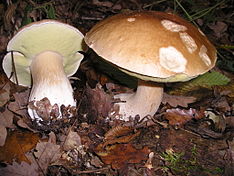Month: June 2019
Rachmaninov: Rhapsody on a Theme of Paganini – BBC Proms 2013 (Stephen Hough : Piano )
Paganini – Caprice No.24 (Franz Liszt)
Hilary Hahn – Paganini – Caprice 24
Transcription (music)
In music, transcription can mean notating a piece or a sound which was previously unnotated, as, for example, an improvised jazz solo. When a musician is tasked with creating sheet music from a recording and they write down the notes that make up the piece in music notation, it is said that they created a musical transcription of that recording. Transcription may also mean rewriting a piece of music, either solo or ensemble, for another instrument or other instruments than which it was originally intended. The Beethoven Symphonies by Franz Liszt are a good example. Transcription in this sense is sometimes called arrangement, although strictly speaking transcriptions are faithful adaptations, whereas arrangements change significant aspects of the original piece.
Further examples of music transcription include ethnomusicological notation of oral traditions of folk music, such as Béla Bartók‘s and Ralph Vaughan Williams‘ collections of the national folk music of Hungary and England respectively. The French composer Olivier Messiaen transcribed birdsong in the wild, and incorporated it into many of his compositions, for example his Catalogue d’oiseaux for solo piano. Transcription of this nature involves scale degree recognition and harmonic analysis, both of which the transcriber will need relativeor perfect pitch to perform.
In popular music and rock, there are two forms of transcription. Individual performers copy a note-for-note guitar solo or other melodic line. As well, music publishers transcribe entire recordings of guitar solos and bass lines and sell the sheet music in bound books. Music publishers also publish PVG (piano/vocal/guitar) transcriptions of popular music, where the melody line is transcribed, and then the accompaniment on the recording is arranged as a piano part. The guitar aspect of the PVG label is achieved through guitar chords written above the melody. Lyrics are also included below the melody.
This Open Source ESP32 3D Printer Control Board Now Supports Marlin 2.0
Franz Liszt La Campanella
Elbphilharmonie LIVE | Neujahrskonzert 2019
best classical recording labels
Speakers Wireless Bluetooth 3.0 Portable Kinyo BT-C02 Rechargable Black – Компјутерски звучници
Kinyo , Bluetooth Speaker BT-C02 FCC ID VF6BT-C02
Boletus edulis
Boletus edulis (English: penny bun, cep, porcino or porcini) is a basidiomycete fungus, and the type species of the genus Boletus. Widely distributed in the Northern Hemisphere across Europe, Asia, and North America, it does not occur naturally in the Southern Hemisphere, although it has been introduced to southern Africa, Australia, and New Zealand. Several closely related European mushrooms formerly thought to be varieties or forms of B. edulis have been shown using molecular phylogenetic analysis to be distinct species, and others previously classed as separate species are conspecific with this species. The western North American species commonly known as the California king bolete (Boletus edulis var. grandedulis) is a large, darker-coloured variant first formally identified in 2007.


Prized as an ingredient in various foods, B. edulis is an edible mushroom held in high regard in many cuisines, and is commonly prepared and eaten in soups, pasta, or risotto. The mushroom is low in fat and digestible carbohydrates, and high in protein, vitamins, mineralsand dietary fibre. Although it is sold commercially, it is very difficult to cultivate. Available fresh in autumn in Central, Southern and Northern Europe, it is most often dried, packaged and distributed worldwide. It keeps its flavour after drying, and it is then reconstituted and used in cooking. B. edulis is one of the few fungi sold pickled. The fungus also produces a variety of organic compounds with a diverse spectrum of biological activity, including the steroid derivative ergosterol, a sugar binding protein, antiviral compounds, antioxidants, and phytochelatins, which give the organism resistance to toxic heavy metals.
